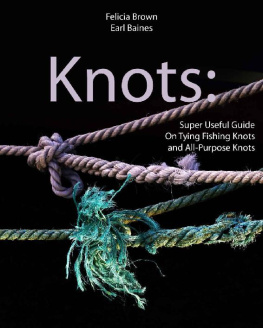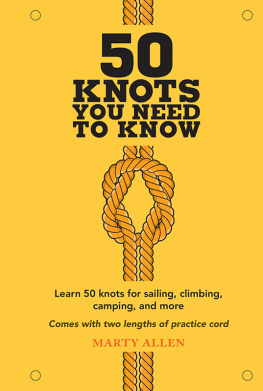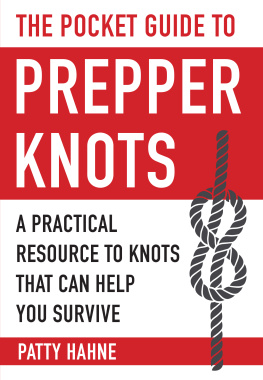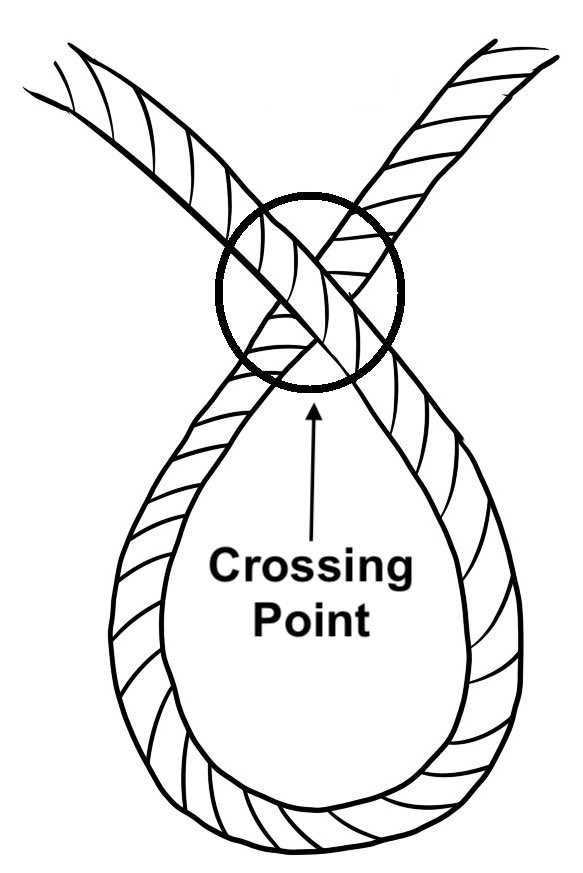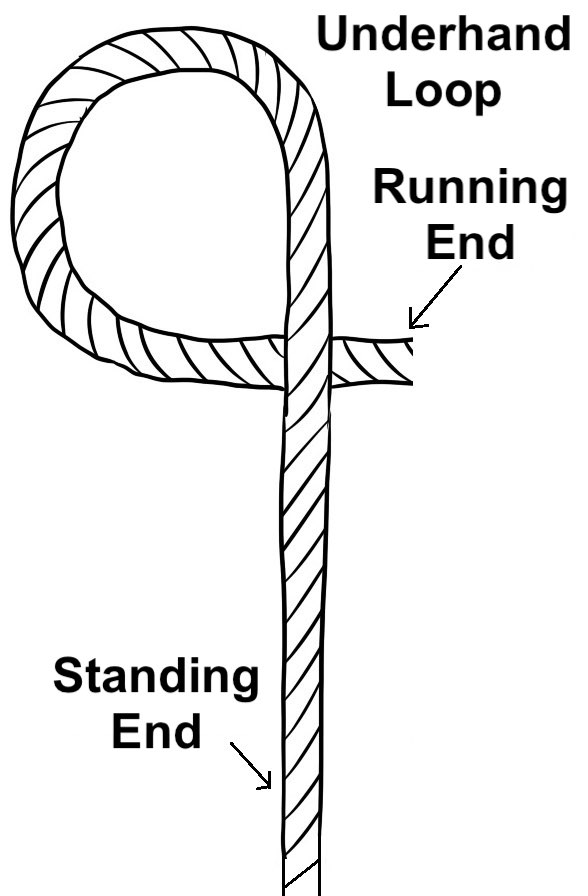Warnings and Disclaimers
The information in this publication is made public for reference only.
Neither the author, publisher, nor anyone else involved in the production of this publication is responsible for how the reader uses the information or the result of his/her actions.
Consult a physician before undertaking any new form of physical activity.
INTRODUCTION
Anyone can tie lots of knots but a proper knot will be stronger and easier to untie. It will also help to conserve rope as you will use less (lots of knots uses more than needed) and having to cut the knots out is less likely since they are easier to untie.
There are many knots, far too many for the average person to remember. Fortunately, there is no need to remember them all. Just being able to tie a handful of knots is enough to see you through any situation when a knot is needed.
The Useful Knots Book is a no-nonsense how-to book on tying the 25+ most useful knots. It comes with easy to follow instructions and pictures for each of the knots, as well as tips on when to best use each knot.
This book is an invaluable resource for the Survival Fitness Plan enthusiast but is also a very useful book for anyone who wishes to master 25+ extremely useful knots.
COMMON TERMS
For ease of explanation when describing how to tie knots the following terminology will be used.
Bight
Any bend in-between the ends of the rope which does not cross over itself.
Crossing Point
The point where the rope crosses over itself.
Load
Refers to the weight of the object being secured, e.g., if you are pulling a log then the log is the load.
Loop
Similar to a bight but the ends cross over, hence creating a closed circle.
An overhand loop is when the running end lies over the top of the standing part. An underhand loop is opposite (the standing part lies on top of the running end).
Rope
A generic term used in this book that refers to cord, rope, string, twine, or whatever material which is being used to tie a knot.
Running End
The part of the rope used to tie the knot. Also known as the working end.
Standing End
The part of the rope other than the running end.
Shock Load
Shock load occurs when there is a sudden increase in load. In such a case the load will be much more than the actual weight of the object. An example of this is when a climber falls and his/her weight suddenly loads the rope.
Turn
A single wrap of the rope around an object. A round turn (pictured) is where the object is completely encircled.
ROPE CARE
Proper rope care will prolong its strength and usability. The same basic rules apply whether you have high quality climbing rope or hand-made twine from plant fibers.
Avoiding Deterioration
There are many things that will increase deterioration. When possible, avoid the following:
- Animals. Animals can gnaw and scratch at rope.
- Corrosives. Chlorine, markers, oils, paints, petrol, and all other chemicals and corrosives should be avoided.
- Dampness. Constant damp conditions will weaken the structure of the rope.
- Heat. This includes fire, friction, electronic heat sources, etc. Beware that rope rubbing on rope will cut rope.
- Direct Sunlight. Ultra violet rays will deteriorate the rope.
- Dirt. Dirt can work its way into rope making it stiff and brittle. Avoid leaving rope directly on the ground and be careful of stepping on it.
- Sharp edges. Sharp edges will cut rope. Be careful of glass, metals, rock, etc. Place something between the rope and any sharp edges for protection, e.g., lay carpet over the rock you need to pass the rope over.
Preventing Fraying
This refers to the protection of the ends of the rope. There are basically two ways to prevent fraying.
Fusing is done by melting the ends.
Whipping is done by using a smaller string to bind the tips of the rope.
Whipping is better than fusing but takes more time. A combination of whipping and fusing is the best.
Simple Whipping Method
There are a few ways to whip a rope. Here is a simple and effective way.
Lay your whipping string along the rope. Wrap around the rope five to ten times in such a way that the string will hold itself in place.
Make a bight with the string and then continue to wrap around the bight and the rope five to ten times. Thread the end of the string through the bight and the pull the other end so that the bight clamps down to secure the string in place. Trim the ends.
Cleaning
Rope can be periodically cleaned to help prolong its use. It should be hand washed in cold water with mild soap. Rinse the soap out and then air dry it. Avoid direct sunlight and do not use any artificial heating source.
Flaking
Flaking is a good way to make the rope ready-to-use as it removes kinks and ensures that it will feed out smoothly.
First take out any knots.
To flake the rope, find one end and lay it on the ground. Pull the rest of the rope through your loose fist and let it fall to the floor.
Coiling
Coiling rope makes it easy to carry, use and store. It will prevent it from tangles and kinks.








